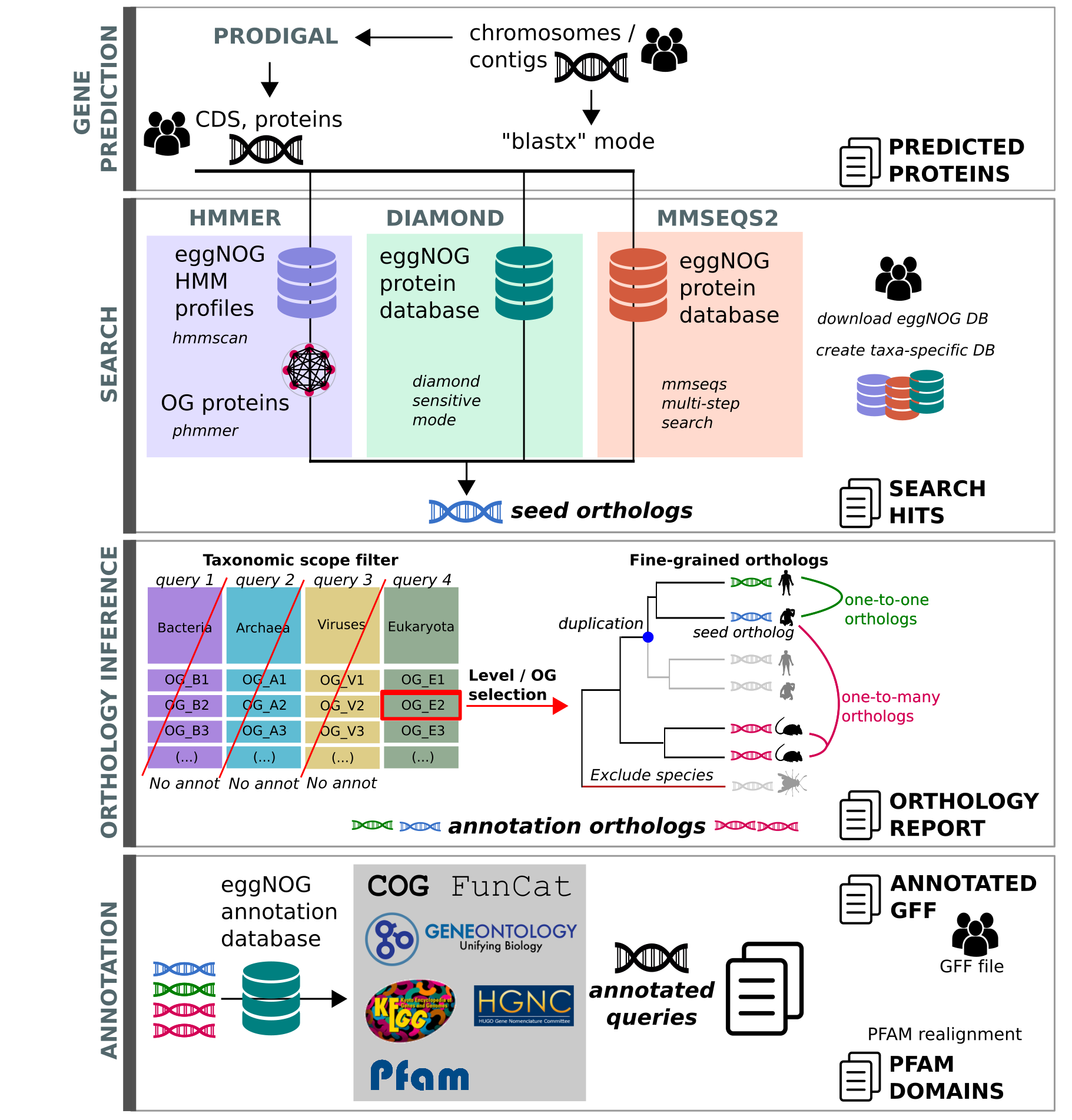Citation:
eggNOG-mapper v2: functional annotation, orthology assignments, and domain prediction at the metagenomic scale.
Carlos P. Cantalapiedra, Ana Hernandez-Plaza, Ivica Letunic, Peer Bork, and Jaime Huerta-Cepas. 2021
Molecular Biology and Evolution, msab293, https://doi.org/10.1093/molbev/msab293
eggNOG 5.0: a hierarchical, functionally and phylogenetically annotated orthology resource based on 5090 organisms and 2502 viruses.
Jaime Huerta-Cepas, Damian Szklarczyk, Davide Heller, Ana Hernández-Plaza, Sofia K Forslund, Helen Cook, Daniel R Mende, Ivica Letunic, Thomas Rattei, Lars J Jensen, Christian von Mering, Peer Bork. 2019
Nucleic Acids Res. 2019 Jan 8; 47(Database issue): D309–D314. doi: 10.1093/nar/gky1085
Please, check your output files for all the references requiring citation for your job.
News
-
18-Aug-2023
eggNOG-mapper 2.1.12 just released! and it is running at eggNOG-mapper web, now including new annotations when searching against the novel families from Rodríguez et al 2022 (try it at eggnog-mapper.embl.de/FESNOV or go to "Advanced Options" -> "Database" -> "Novel families") -
19-Jul-2022
eggNOG-mapper 2.1.9 just released! and it is running at eggNOG-mapper web, now including a new option to search against the novel families from Rodríguez et al 2022 ("Advanced Options" -> "Database" -> "Novel families") -
22-Oct-2021
- New blastx-like search options for genomic and metagenomic sequences
- New frameshift option for annotation of Nanopore reads
- Accepting gzipped files as input (file name must end in '.gz') -
01-Oct-2021
New eggNOG-mapper v2 paper in Advanced Access!

